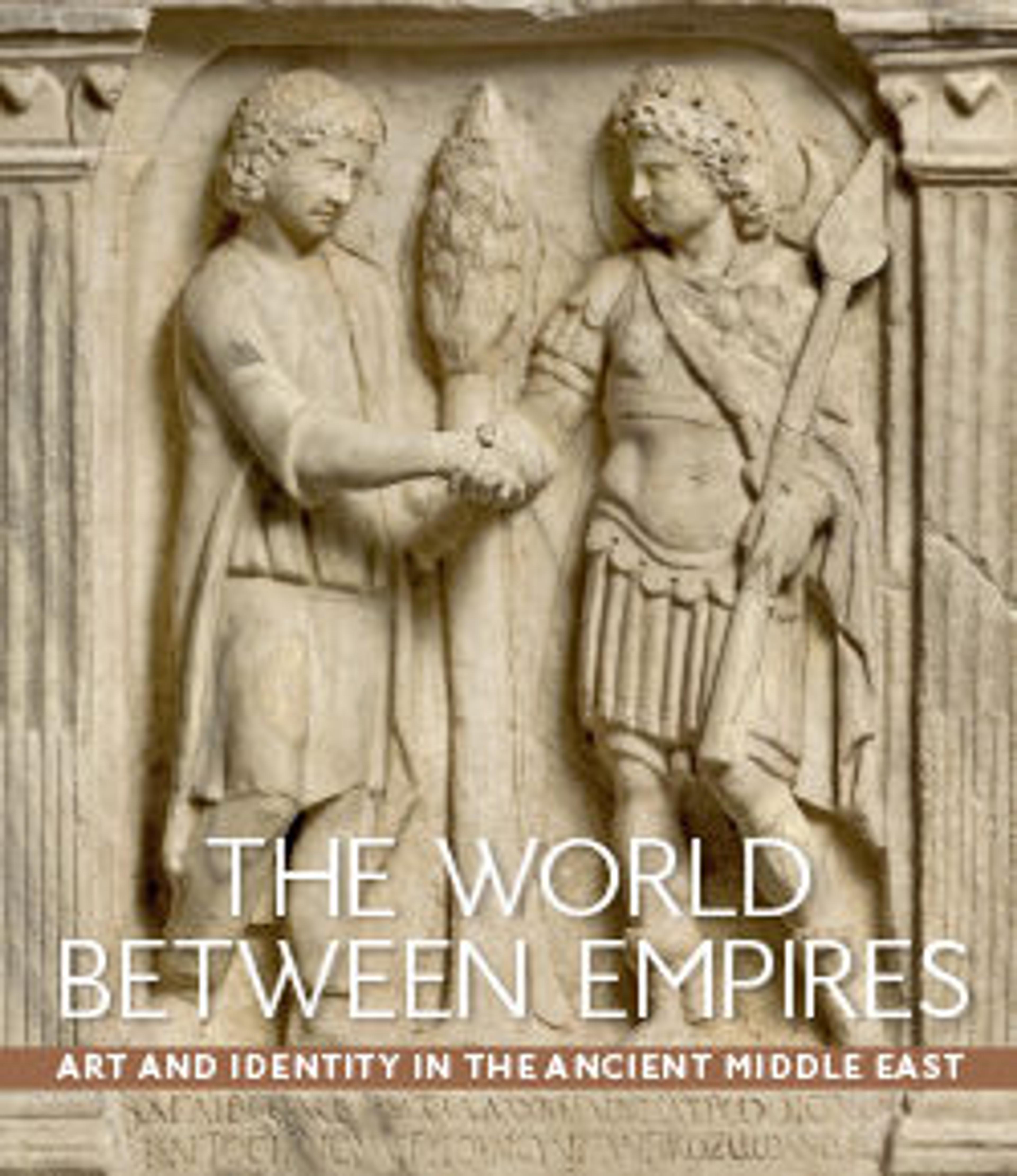Altar
Inscription:
1 (For) Blessed Be His Name Forever,
2 the Good and Merciful, made
3 in thanksgiving Hagigu, son of
4 Yahiba, son of Yarhay,
5 (son of) Daka, for his life
6 and the life of his father
7 and his brothers. In the month of
8 Qinyan, the year 543. (232 CE)
Transliteration:
1 bṙyk šmh lʿlmʾ
2 ṭbʾ wṙḥmnʾ ʿbd
3 wmwdʾ ḥggw bṙ
4 yhybʾ bṙ yṙḥy
5 dkʾ ʿl ḥywhy
6 wḥyʾ ʾbwhy
7 wʾḥwhy byṙḥ
8 qnyn šnt 5.100
9 +40+3
It was a common Palmyrene religious practice to dedicate stone altars to the worship of a specific god or gods. This example, like most Palmyrene altars, takes the shape of a pedestal with moldings at top and bottom. The top is carved in the shape of a bowl, evoking an incense burner, but it is not clear whether this bowl was actually meant to be used as it shows no signs of burning. Altars of this type are sometimes decorated with images carved in relief showing a deity or deities, worshippers, or attributes, such as a pair of raised hands with palms turned outward in a gesture of adoration. However, many are without figural dedication, as is this example. Its inscription indicates it was dedicated as a votive gift to the Palmyrene deity known as the "Nameless God," identified here only by positive epithets. The month and year when the altar was dedicated is recorded. The months of the Palmyrene calendar were based on the earlier Babylonian calendar, while the years were reckoned according to the Seleucid era, which began in 312 B.C.
1 (For) Blessed Be His Name Forever,
2 the Good and Merciful, made
3 in thanksgiving Hagigu, son of
4 Yahiba, son of Yarhay,
5 (son of) Daka, for his life
6 and the life of his father
7 and his brothers. In the month of
8 Qinyan, the year 543. (232 CE)
Transliteration:
1 bṙyk šmh lʿlmʾ
2 ṭbʾ wṙḥmnʾ ʿbd
3 wmwdʾ ḥggw bṙ
4 yhybʾ bṙ yṙḥy
5 dkʾ ʿl ḥywhy
6 wḥyʾ ʾbwhy
7 wʾḥwhy byṙḥ
8 qnyn šnt 5.100
9 +40+3
It was a common Palmyrene religious practice to dedicate stone altars to the worship of a specific god or gods. This example, like most Palmyrene altars, takes the shape of a pedestal with moldings at top and bottom. The top is carved in the shape of a bowl, evoking an incense burner, but it is not clear whether this bowl was actually meant to be used as it shows no signs of burning. Altars of this type are sometimes decorated with images carved in relief showing a deity or deities, worshippers, or attributes, such as a pair of raised hands with palms turned outward in a gesture of adoration. However, many are without figural dedication, as is this example. Its inscription indicates it was dedicated as a votive gift to the Palmyrene deity known as the "Nameless God," identified here only by positive epithets. The month and year when the altar was dedicated is recorded. The months of the Palmyrene calendar were based on the earlier Babylonian calendar, while the years were reckoned according to the Seleucid era, which began in 312 B.C.
Artwork Details
- Title: Altar
- Date: ca. 232
- Geography: Syria, probably from Palmyra
- Medium: Limestone
- Dimensions: 20 7/16 × 8 1/4 × 5 1/4 in. (52 × 21 × 13.3 cm)
- Credit Line: Purchase, 1895
- Object Number: 95.28
- Curatorial Department: Ancient West Asian Art
More Artwork
Research Resources
The Met provides unparalleled resources for research and welcomes an international community of students and scholars. The Met's Open Access API is where creators and researchers can connect to the The Met collection. Open Access data and public domain images are available for unrestricted commercial and noncommercial use without permission or fee.
To request images under copyright and other restrictions, please use this Image Request form.
Feedback
We continue to research and examine historical and cultural context for objects in The Met collection. If you have comments or questions about this object record, please contact us using the form below. The Museum looks forward to receiving your comments.
